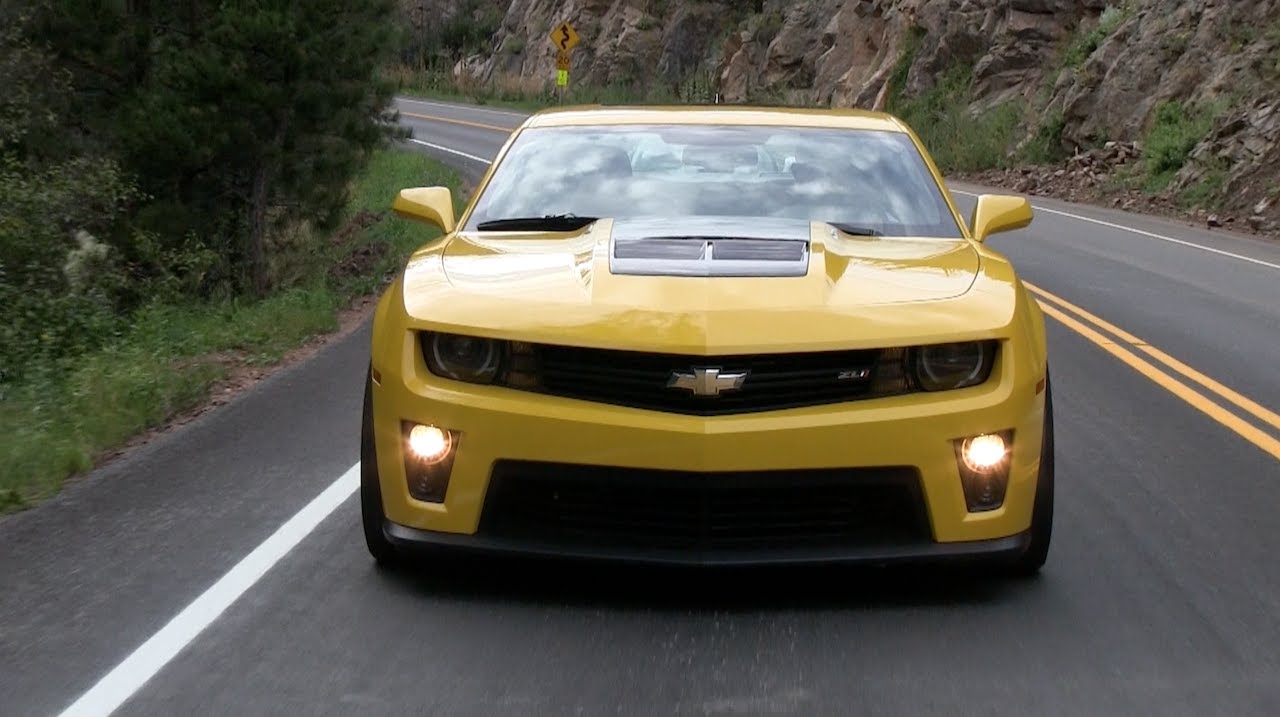For more than a century, Chevrolet has delivered some of the most well-engineered vehicles to both America and the global market. Chevy cars have earned a reputation not only for their reliability and safety, but also for their stylish appeal, affordability, and the widely acknowledged fact that they’re a joy to drive.
Now, 109 years after Chevy first began production, the brand remains as strong as ever. Its vehicles have become faster, more dependable, safer, and just as—if not more—fun to drive.
Over the past decade, Chevrolet has introduced several standout models across various segments. In this article, we highlight the top ten Chevy models from the last ten years.
5. 2016 Chevy Cruze
The 2016 Chevy Cruze is a comfortable, fuel-efficient vehicle that features a user-friendly interface and comes with a wallet-friendly price tag.
It’s outfitted with modern safety technologies and powered by a fuel-conscious engine. Under the hood, it houses a 1.4-liter turbocharged engine capable of producing 153 horsepower and 177 lb-ft of torque.
The 2016 Chevy Cruze offers a variety of safety systems, including blind-spot monitoring and rear parking sensors. These enhancements make it an excellent choice for both city commuting and longer road trips.
The Cruze is an exceptionally smooth car, from its aerodynamic design to the way its doors close with a soft, reassuring wumpf. Much of this smoothness comes from its remarkably well-tuned suspension, offering a level of refinement that stands out in its class.
This quality is especially evident in the mid-tier LT trim featured here, equipped with an automatic transmission and 16-inch wheels.
While the top-of-the-line Premier trim with its 18-inch wheels might sacrifice some of that smoothness, the entry-level Cruze L with 15-inch tires and their higher sidewalls could be even more forgiving on the road. No matter where you look in the lineup, though, you’re still dealing with a ride that’s as smooth as a baby’s bottom.
In terms of size, the Cruze’s wheelbase is 0.6 inches longer than the previous model, and its overall length has grown by 2.7 inches, pushing it toward the larger end of the compact segment.
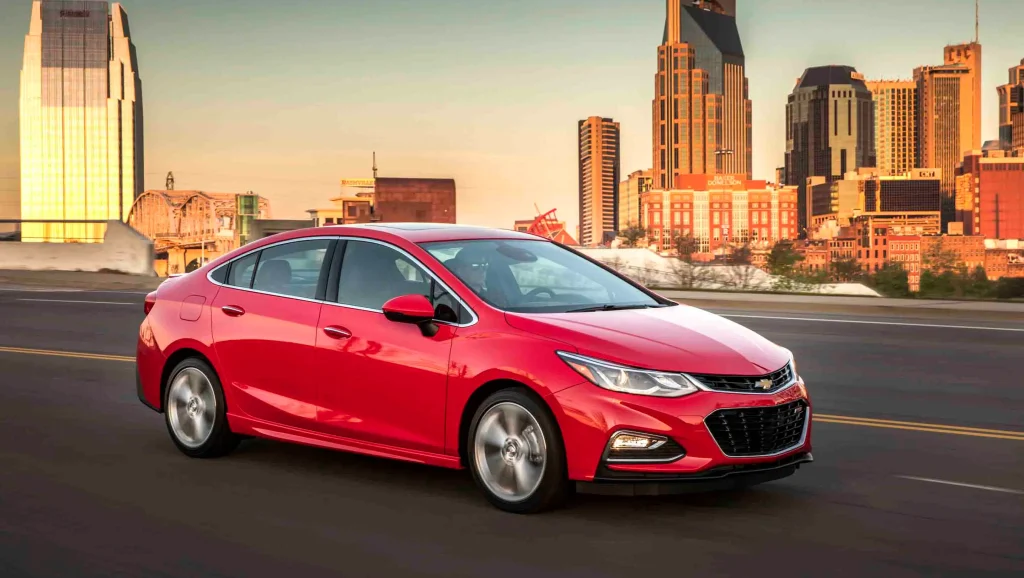
Despite these changes, Chevrolet refined the Cruze’s once-boxy silhouette by rounding off its edges and lowering the roofline by 0.7 inches. This reshaping actually reduced most interior dimensions—except for rear legroom and knee space.
Still, Chevrolet managed something of a packaging victory. The car feels more spacious than before. A deeply set dashboard pushes the steeply angled windshield farther from the driver, creating a more open feel in the front.
Meanwhile, rear passengers benefit from gains of 2.0 inches in knee room and 0.7 inches in legroom, lending the back seat an almost limousine-like sense of comfort. That said, while there’s plenty of room down low, headroom in the rear remains a bit tight.
4. 2014 Chevrolet SS
The 2014 Chevy SS has all the makings of a sleeper sedan. At first glance, it appears like a standard—yet attractive—four-door, but under the hood lies an LS3 V8 engine. Paired with a six-speed automatic transmission that’s easy to launch, the Chevy SS generates an impressive 415 horsepower and 415 lb-ft of torque.
Not only can the 2014 Chevy SS sprint from 0 to 60 in under 4.5 seconds, but it also provides enough cabin space to bring your friends along for the ride—because why not? The Chevy SS truly earns its badge: it’s Super Sporty.
The more things evolve, the more they tend to stay the same. Chevrolet originally axed the Impala SS after the 1969 model year, only to bring it back 25 years later as a 1994 model.
Now, another two decades on, the 2014 Chevrolet SS makes its debut as the first rear-wheel-drive sedan from Chevy since the final 1996 Impala SS left the factory.
Seriously, Chevy—make up your mind. Do you want to build a full-size, rear-wheel-drive four-door with a V-8 under the hood or not?
If the answer is yes, then it’s time to put this new 2014 SS in front of more potential buyers who have between $40,000 and $50,000 to spend on a high-performance luxury sedan.
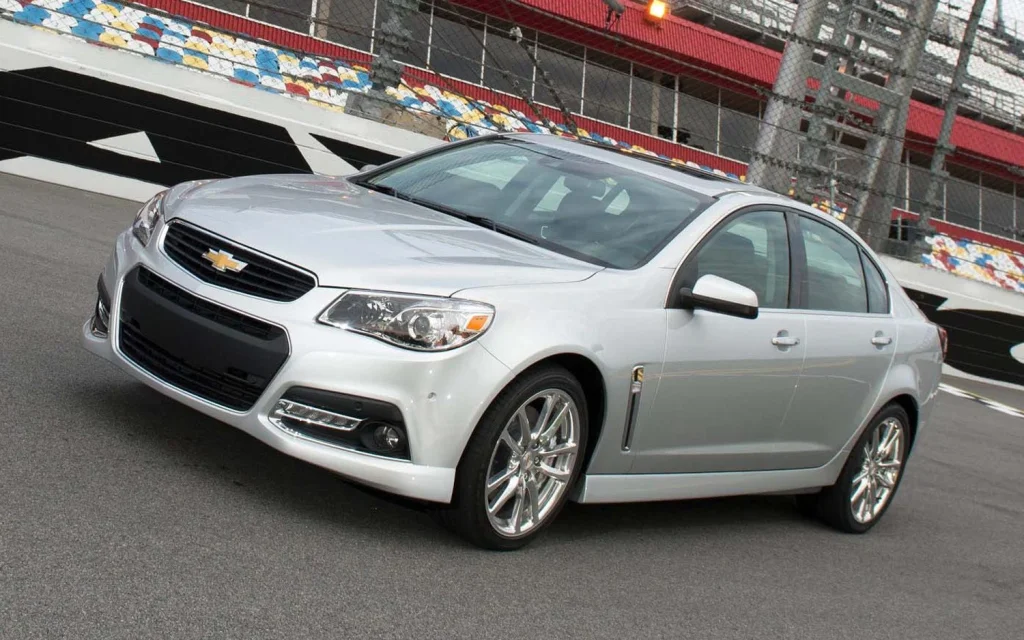
Because the truth is, this car is impressive. The catch? That price tag might make it a tough sell, especially since buyers in this bracket usually aren’t looking for a Chevy badge on the front grille.
Still, if they got behind the wheel and evaluated the SS in the right context, I think they’d recognize what a true bargain it is.
Chevrolet doesn’t offer much customization with the 2014 SS sedan. It comes fully loaded, minus a sunroof, a full-size spare, and a few other things that aren’t really essential. You get five exterior colors to choose from, but inside it’s black only. Wheels? Just one option: a 19-inch forged aluminum set with a polished finish.
The SS comes standard with Chevrolet MyLink and an 8-inch color touchscreen, a premium Bose audio system, dual-zone automatic climate control, and a six-month OnStar subscription.
You also get leather sport seats with suede microfiber inserts, 10-way power adjustments for both front seats, heating and ventilation, and a bunch of high-end touches like Keyless Access with push-button start, a head-up display, remote start, and Automatic Parking Assist—not to mention a full suite of safety features.
Thanks to Chevrolet Complete Care, scheduled maintenance is covered for the first two years or 24,000 miles. Plus, the car includes a five-year/100,000-mile roadside assistance plan with courtesy transportation in case of unexpected repairs.
My test car came in Silver Ice Metallic, had the optional power sunroof ($900), and totaled $46,670. At the time of this review, Chevy was offering either a $500 rebate or long-term low-interest financing—but don’t count on getting this rare sedan for much less than sticker price.
Also Read: 5 Smoothest Idling Cars and 5 That Rattle at Stoplights
3. 2013 Chevy Malibu
Chevrolet has long been recognized for producing vehicles that are both affordable and reliable, and the Malibu perfectly embodies these qualities.
The 2013 Malibu is a sleek, dependable sedan designed to offer comfort and practicality. With ample interior and cargo space for five passengers, the 2013 Chevy Malibu proves to be an ideal option for a daily driver.
Powering the 2013 Malibu is a 2.3-liter inline-four engine mated to a six-speed automatic transmission. This engine delivers 197 horsepower at 6,300 rpm and 191 lb-ft of torque at 4,400 rpm. The 2013 Chevrolet Malibu was offered in three variants: Standard, Eco, and Turbo.
The Malibu’s design suffers from too much visual bulk in its overhangs when paired with the Eco trim’s 17-inch wheels. Opt for the 19-inch wheels available on the LTZ, and the vehicle’s proportions improve noticeably.
While it may not be as bold or forward-thinking in its styling as the Ford Fusion or Hyundai Sonata, that reserved approach might appeal to buyers who prefer a more traditional sedan over one with a coupe-like silhouette. Against competitors like the Accord, Camry, Altima, or Passat, the Malibu appears slightly less utilitarian.
Inside, the LTZ trim shares its core layout with the Eco model but brings some enhancements. As a result, the Malibu’s interior materials and design could be considered among the best in the segment, although rear legroom is notably lacking.
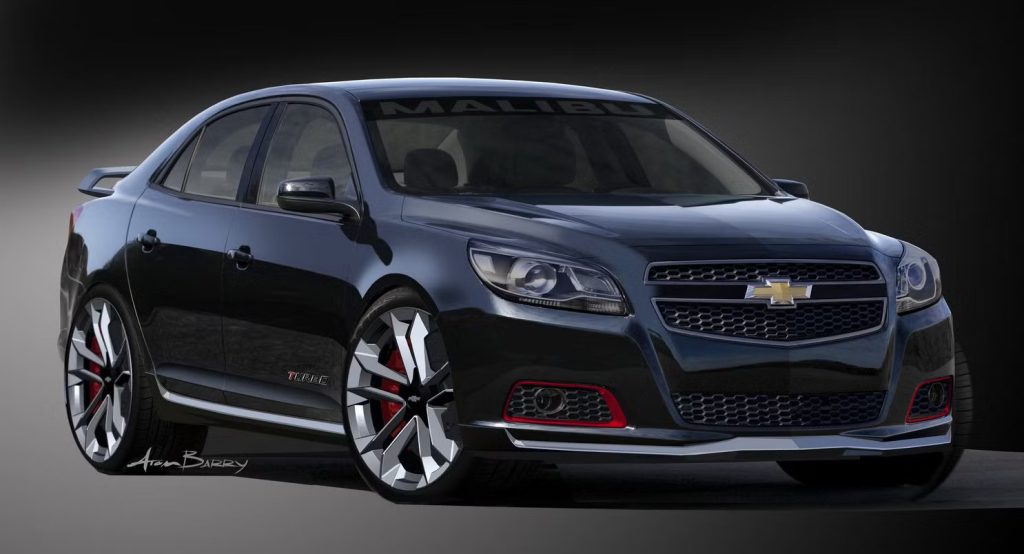
Average-sized adults can squeeze into the back seat, but it’s a tight fit—and there are no dedicated air vents for rear passengers. Making matters worse, the rear door panels feel noticeably cheaper and more rigid to the touch.
Chevrolet’s MyLink infotainment system marks the brand’s entry into the modern connected car space. I’m no Alex Dykes, and I often find these systems challenging to use. That’s not the case with MyLink. Phone pairing is fast and intuitive.
The “Home,” “Back,” and “Fav” buttons remain fixed in the screen’s top-left corner, ensuring easy navigation. Each function is displayed as a large, easily tappable icon on a scrollable homepage. Notable features include a well-integrated Pandora app, as well as access to real-time weather, movie listings, and fuel prices.
HVAC and heated seat controls aren’t routed through the touchscreen—but they don’t need to be, thanks to the presence of large, clearly labeled physical buttons for those functions. Those interested in advanced driver assistance systems might find the Malibu’s options underwhelming.
While forward collision alert (a practical addition) and lane departure warning (arguably less useful) can be bundled for $395, the rearview camera is fairly rudimentary. Additionally, features like obstacle detection and blind-spot monitoring are not available on the LTZ trim.
2. 2012 Chevrolet Camaro ZL1
The 2012 Chevy Camaro ZL1 had all the ingredients of an instant classic. Marking Chevrolet’s re-entry into the muscle car arena after a lengthy hiatus, the fifth-generation ZL1 was a bold statement. Boasting a top speed of 184 mph, it drew power from a 6.2-liter V8 engine that unleashed 580 horsepower and 556 lb-ft of torque.
This powerhouse could accelerate from 0 to 60 mph in just 3.9 seconds, making it the fastest Camaro ever built at the time. With such commanding performance, the ZL1 clocked an impressive Nürburgring lap time of 7:41.27.
The 2012 Chevrolet Camaro ZL1 is a car that immediately grabs attention, and I’m not the only one who feels this way. While I haven’t yet driven the 2013 Ford GT500 (Ford, take note!), I’ve experienced what I consider the peak of muscle car excellence.
The Camaro ZL1 is a beast that impressed me from the moment I heard its powerful engine roar. It defies the typical constraints of electronic nannies, fully embraces its bold, masculine persona, and effortlessly burns rubber when you engage the clutch. The ZL1 is exactly what its aggressive looks promised when the Camaro debuted in 2009.
It’s a car that’s more in the vein of Hulk from The Avengers than Lou Ferrigno’s portrayal from the TV show, and it delivers that much-needed punch to the gut of performance. Chevrolet has raised the bar with the ZL1, setting a new standard of desirability, and at its price point, it’s hard to find anything else that comes close.
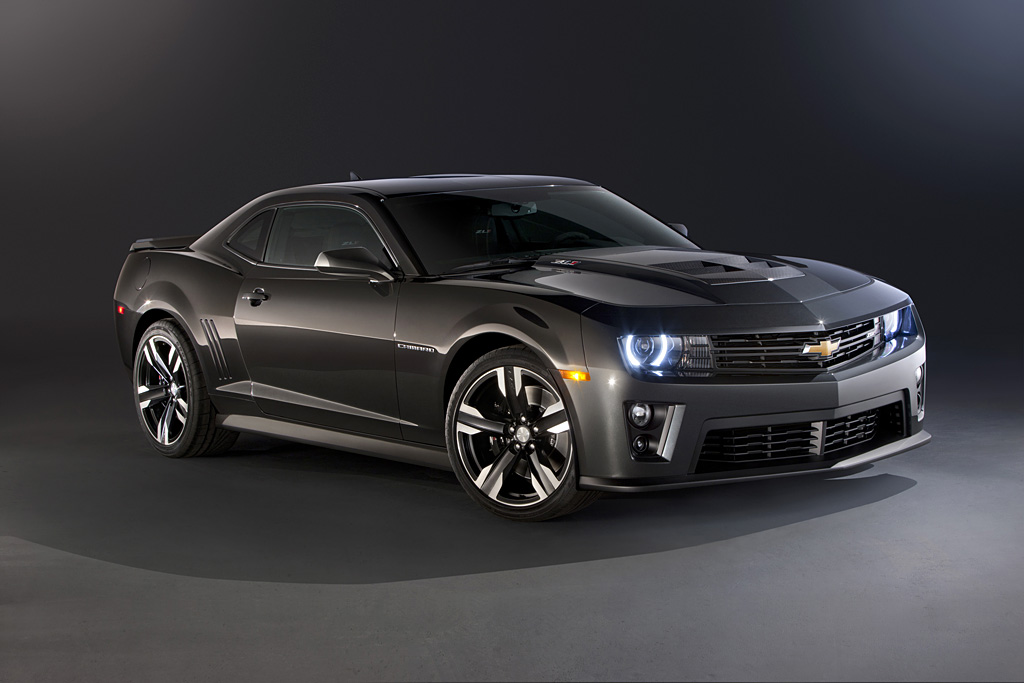
At $67,000 for the base manual version, some might find it expensive, but once you drive it, the price will feel like a mere trifle. You’ll be ready to do whatever it takes to pay Chevrolet whatever they ask for such a magnificent machine.
Admittedly, I’ve broken the first rule of writing reviews by giving you the conclusion upfront, but I suspect many of you will have already dashed off to raid your savings and head to the dealership. For those still with me, you either want more details or are curious about why I’m so smitten with a humble Chevy.
The ZL1 is the fastest production Camaro to date, featuring the 6.2-liter LSA engine from the Cadillac CTS-V, now upgraded from 556bhp to 580bhp.
The manual version of the ZL1 we drove was capable of reaching 0-100kph in 4.0 seconds, with a top speed of 290kph, though our car was limited to 250kph. The automatic is slightly quicker to 100kph at 3.9 seconds, with a top speed of 296kph.
This performance does come with a caveat: the fine print mentions a “(rolling start)” to account for wheelspin before the car truly takes off, though the manual model does include launch control.
The ZL1 is also hailed as the most technically advanced muscle car in its class, with the name ZL1 tracing its origins to the engine used in 1960s racing Camaros. Today’s version is supercharged with a Roots-style blower featuring a four-lobe rotor set and a compact intercooler.
The car is also equipped with a dual-mode exhaust system, where the exhaust valves self-actuate to maintain a low rumble at low speeds and open up for a free-flowing, aggressive V8 roar at higher revs. Even at startup, the Camaro ZL1 announces its presence with a loud, commanding sound.
Under the hood, the Tremec MG9 manual transmission is designed to handle 30% more torque than the Camaro SS, thanks to its strengthened shafts and rear housing. The Hydra-Matic 6L90 automatic transmission has also been reinforced to handle the increased engine output, offering three driving modes, including sequential shifts.
As for the suspension, the ZL1 comes with third-generation Magnetic Ride Control, the same suspension technology used in Ferraris. The Magneto-Rheological fluid is paired with twin-wire dual-coil dampers on all four corners, with the system adjusting 1000 times per second to provide exceptional handling performance.
1. 2010 Chevrolet Camaro SS
After a seven-year break from American streets, the Camaro made its triumphant return in 2010 with the SS model. Fans and muscle car enthusiasts were thrilled, and the Camaro SS more than lived up to the hype as a true competitor to the Mustang.
With beefier tires and a broader rear stance, the 2010 Camaro SS paid homage to the bold design cues of the ’80s era. Under the hood was a 6.2-liter V8 engine pushing out 422 horsepower and 408 lb-ft of torque. These numbers translated to a 0-60 mph time of just 4.8 seconds, reaffirming its performance pedigree.
The new Camaro shares very little with its most recent, fourth-generation predecessor, except for a further-evolved version of the GM small-block engine. Unsurprisingly, the LS3 is absolutely fantastic.
While I wish you could hear more of its growl at idle, there’s no doubt that this is a genuine pushrod V-8 once you hit the gas. In other ways, the Camaro has more in common with the Pontiac G8, as it was largely developed by the same Australian team that brought us the previous Pontiac GTO.
However, there are still issues, such as the absurdly heavy doors, a cheap, hard plastic interior, and a nearly nonexistent view from inside. These were some of the same flaws that plagued the last Camaro and the “Batmobile” Pontiac Firebird.
What the Camaro does have in its favor, though, are its stunning looks. You might think the styling would have lost its charm after years on the auto show circuit and a major role in a blockbuster movie, but it still turns heads in traffic.
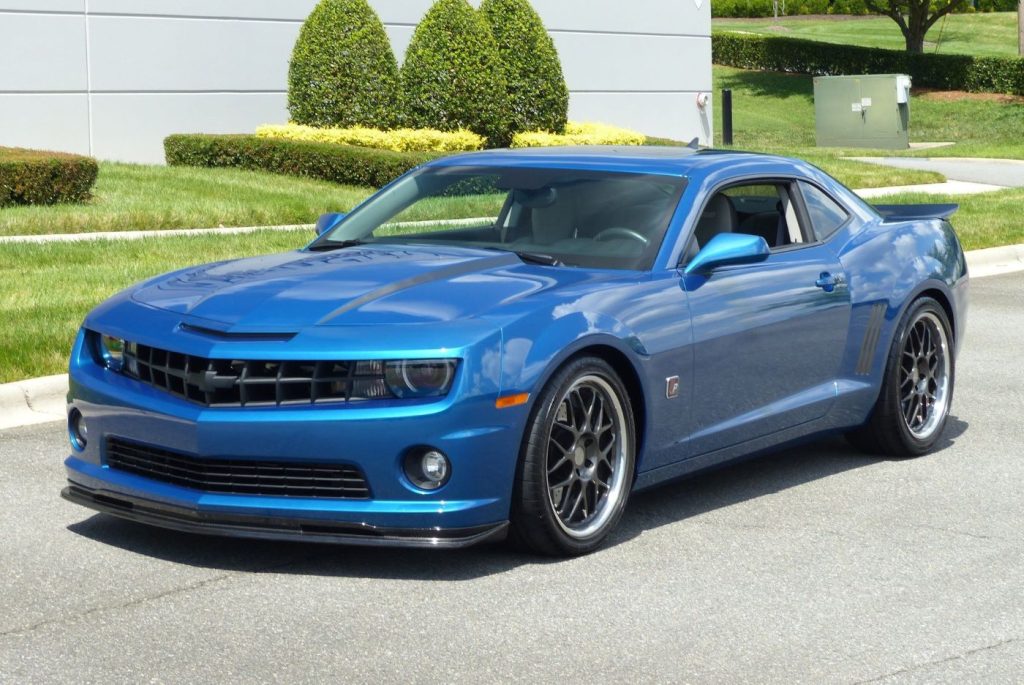
More importantly, it makes you smile every time you walk up to it in a parking lot. The bold, expressive lines practically shout, “Look at me! I’m a Camaro!” and even the super-thick C-pillar and the strangely shaped, yet almost origami-like, trunk opening are worth overlooking.
As for driving, the Camaro is a blast. Yes, it’s a bit on the heavy side, but it moves with plenty of power. The brakes on the particular car I drove were a bit worn, but I trust that they’re excellent on models that haven’t been through track sessions.
The Camaro SS handles corners like you’d expect from a modern rear-wheel-drive car with an independent rear suspension, but it still feels massive. The real fun in the Camaro comes from ditching any fancy driving techniques and just mashing the throttle as often as possible.
General Motors really needs this car to sell well, and I believe it will, thanks to its irresistible mix of style and power. However, some buyers, particularly those who are used to imports, may be put off by the lack of refinement and practicality. If only Chevrolet offered a four-door sedan with similar performance, like the G8.
Also Read: 10 Chevrolet Models With a Reputation for Rugged Engines
Chevrolet Cars That Disappoint
Chevrolet has earned its place in automotive history with a long lineup of iconic models. Names like the Bel Air, Corvette, Camaro, Impala, Nova, SS, Silverado, and Suburban immediately come to mind. The brand has also proven its ability to deliver dependable, everyday cars with models such as the Volt and Malibu.
However, Chevrolet has also produced its fair share of misfires—vehicles it would likely prefer we didn’t remember. While the malaise era birthed some of the brand’s worst offerings, even more recent oddities have raised eyebrows—like the bewildering badge-engineered Geo Metro Convertible.
Not even Chevy’s most legendary nameplates have been immune to low points. Take, for example, the Chevrolet Camaro version infamously known as the “Iron Duke.” Believe it or not, someone at Chevrolet greenlit a 4-cylinder Camaro with just 90 horsepower, resulting in a 0–60 mph time of nearly 20 seconds.
1. Chevrolet HHR
The Chevrolet HHR was an ill-conceived idea whose time, unfortunately, had arrived. Far from being a halo car, it was instead the antithesis.
Observing the flawed success of the Chrysler PT Cruiser, Chevy decided it needed its own retro-inspired model. So, it brought in Bryan Nesbitt—the designer of the PT Cruiser—to craft a vehicle that ultimately managed to appeal to almost no one.
We could dive into its sluggish drivetrain and disappointing fuel economy, but honestly, a glance at the HHR tells you everything you need to know about how poorly it was executed.
Even time, along with our perception of it and the way we move through it, can influence how we judge things.
The same applies to how we evaluate cars, and I’ll be the first to admit that, having mostly driven Euro-spec vehicles early in my career as an automotive journalist, any American model I encountered would often feel poorly made in comparison. To be fair, that was a valid impression with many U.S.-made cars from the early to mid-2000s.
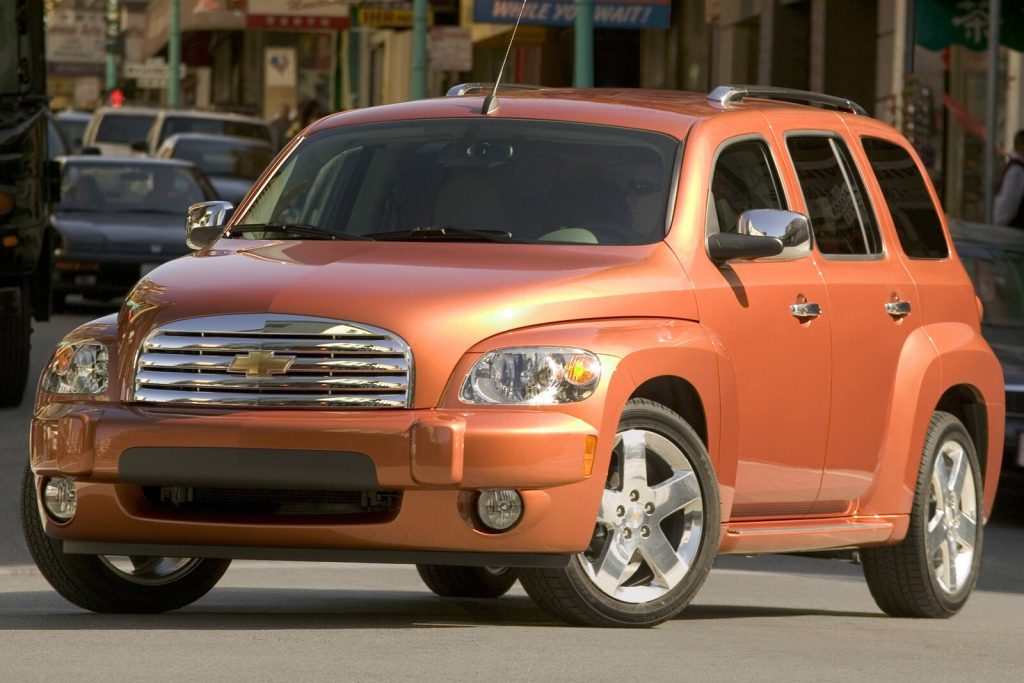
However, there was one vehicle that stood out as a glaring example of poor build quality, subpar driving dynamics, and an overall unappealing feel: the Chevrolet HHR. It was easily the worst car I’ve ever driven.
I’m not trying to be harsh or unfair. Honestly, I’m surprised that, out of the hundreds of cars I’ve reviewed over the years, I can’t think of another that left such a negative impression as the HHR.
I’ve driven my fair share of disappointing vehicles, such as anything with a SsangYong badge (at least the older models), or the disappointingly mediocre Nissan Pulsar or Dodge Caliber. To be fair, the Caliber wasn’t that bad, even with its shockingly cheap interior plastics.
That said, I’ll focus on the 2.4-liter Ecotec-equipped HHR, as I didn’t have the chance to drive the SS version with its more powerful 2.0-liter turbocharged engine.
I first encountered the Chevy HHR more than 14 years ago near the French city of Lyon. Now, you may not know much about Lyon, and that’s perfectly fine. However, its sports team, Olympique Lyon, is where former San Antonio Spurs guard Tony Parker now serves as a board member and a potential future club president.
2. Chevrolet Tracker
The Chevrolet Tracker stands out as one of the most forgettable models in the brand’s history. From ride comfort to performance and handling, nearly every aspect was underwhelming.
Initially, the Tracker was part of a joint venture between General Motors of Canada and Suzuki. The first generation that hit the American market was actually a respectable compact off-roader, but that was largely because it was essentially a rebadged Suzuki Sidekick.
The second-generation Tracker, which was more or less a Suzuki Vitara, fared worse. It featured a rack and pinion steering setup that was particularly vulnerable to damage during off-road use—eliminating the one real strength it had.
The Chevrolet Tracker comes equipped with a variety of key standard features designed for comfort, convenience, and performance. Under the hood, it features a 2L 3-cylinder turbo engine, producing 130 horsepower and 140 lb-ft of torque.
The vehicle is powered by front-wheel drive (FWD) and utilizes a McPherson front suspension combined with a rear torsion bar suspension. The transmission is a 5-speed automatic with manual shift capability, providing both ease of use and control.
Safety and stability are ensured with the inclusion of StabiliTrak stability control and a traction control system, along with brakes featuring front discs and rear drums, all equipped with ABS, EBD, and Brake Assist. The electric power steering system offers tilt and telescopic adjustments for personalized comfort.
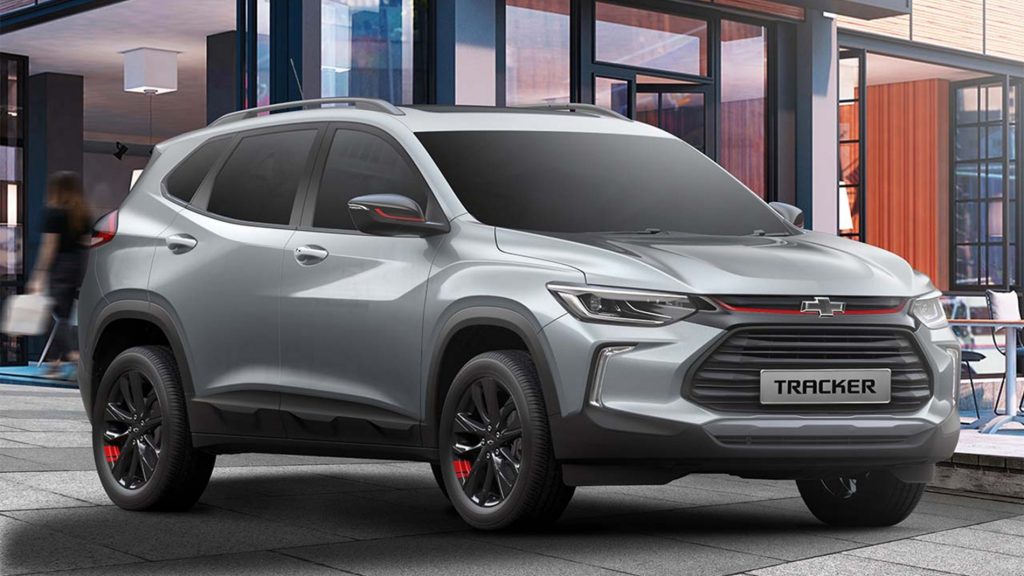
In terms of lighting, the Tracker features LED daytime running headlamps with automatic ON/OFF functionality, halogen headlamps integrated with spotlight and turn signal auxiliary lights, as well as tail and stop lamps.
The driver’s seat is adjustable with a 4-way manual setting, while the vehicle rides on 17-inch steel wheels with a two-tone decorative cap and all-terrain 215/55R17 tires. A 16-inch steel spare wheel with a T115/70R16 tire, mechanical jack, and tools are provided for emergencies, along with a reflective safety triangle.
The Tracker’s exterior includes a chrome grille, body-colored front and rear bumpers, black roof rails, a roof antenna, and a rear spoiler for added utility and style. The vehicle also comes with tinted windshield and windows, as well as windshield wipers with variable delay for the front and intermittent functionality for the rear.
For safety, the Tracker is equipped with six airbags, including two front, two side, and two roof airbags, as well as an ISOFIX child seat anchoring system and three-point seat belts for all seating positions, including pretensioners for the driver and front passenger. Acoustic seatbelt warning indicators are provided for all seats, along with an anti-theft system for added security.
Convenience features include remote-controlled windows with remote closing and express up/down functionality for all windows, a keyless engine start button with a proximity sensor, and a rear electric defogger.
The central console features an armrest with integrated storage space, while the outside mirrors have electric adjustment, and the rearview mirror offers manual adjustment. Both the driver and passenger are provided with sunshades with vanity mirrors.
3. 2006/2007 Chevrolet Malibu SS
There was a time when Chevrolet’s “SS” badge—short for Super Sport—meant the car wearing it was something truly special. Sadly, the 2006/2007 Malibu SS did not live up to that legacy.
At its core, the Malibu was a perfectly average daily commuter, best suited for drivers with little interest in cars. The SS version simply added a bit more speed to a car built for people who didn’t care much about performance.
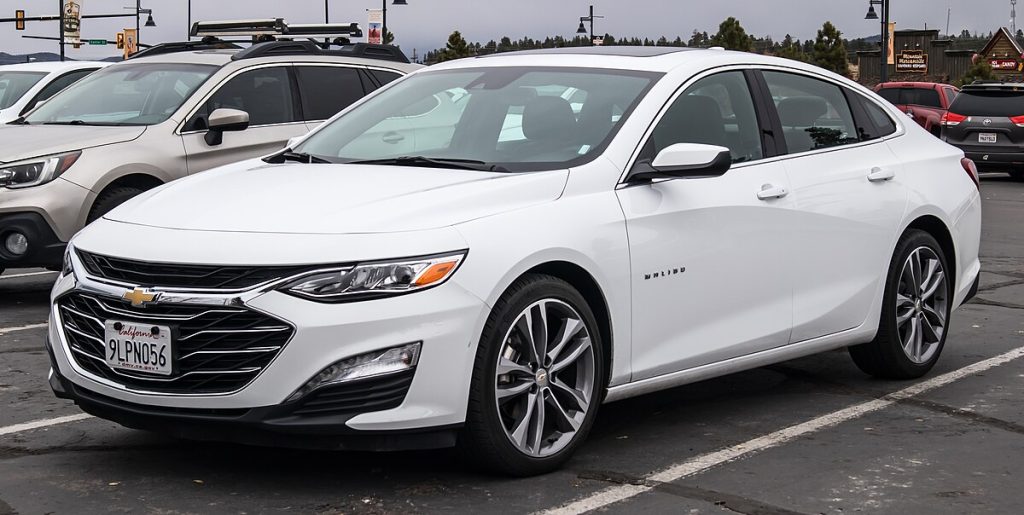
While the Malibu SS was equipped with a 3.9-liter V6 producing 240 horsepower and 240 lb-ft of torque, all that power was funneled through the front wheels via a four-speed automatic transmission. It did come with slightly upgraded sport suspension, but overall, the Malibu SS diluted the very concept of what a performance-oriented Chevrolet should be.
4. 2004–2006 Chevrolet Aveo
The Chevrolet Aveo was developed by GM Daewoo in South Korea and marketed under various names around the world. As a bare-bones mode of transportation, it wasn’t completely terrible—but it offered little to make it stand out.
At a time when other subcompacts were pushing boundaries in design, features, or driving dynamics, the Aveo remained painfully uninspired. Its performance was severely lacking, and any sense of charm was absent.
If we were to compare it to vanilla pudding, it wouldn’t be the real deal—it would be an off-brand imitation made by someone who’d never actually tasted vanilla pudding and was winging it from a half-finished recipe.
Chevrolet, along with General Motors, has long acknowledged that it lacked a competitive offering in the low-priced subcompact segment.
This gap in their lineup was addressed with the introduction of the Chevrolet Aveo. The Aveo emerged as a product of GM’s acquisition of Daewoo Motor Company and is essentially a rebadged version of the Daewoo Kalos, a vehicle that was already available in other global markets.
The Aveo comes in both a four-door sedan and a five-door hatchback configuration, offered in three trim levels, with the most affordable model priced around $10,000. It is powered by a 1.6-liter, DOHC four-cylinder engine that produces 103 horsepower, offering respectable power, especially when paired with the automatic transmission.
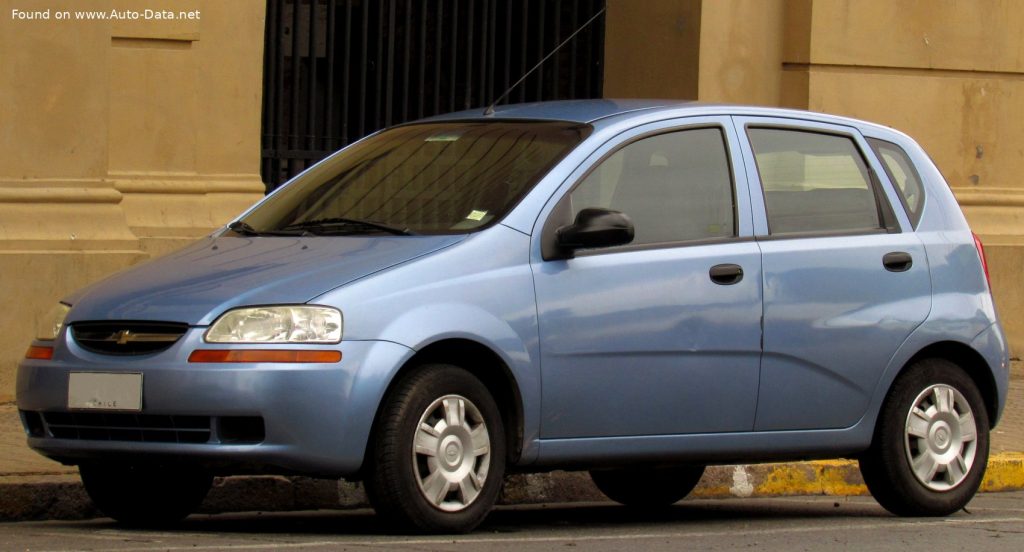
The Aveo handles better than many vehicles in its class, providing a more engaging driving experience. Despite being the entry-level model in the Chevrolet lineup, the Aveo still includes an impressive array of standard features.
The LT models come equipped with air conditioning (including air filtration), MP3-capable audio, full power accessories, and remote keyless entry. The entry-level Special Value models offer more basic amenities, such as power steering, an AM/FM radio, and a rear defroster.
When it comes to pricing, driving dynamics, and available amenities, the 2006 Chevrolet Aveo competes directly with other vehicles in its segment.
However, it falls short of offering the same long-term warranty coverage provided by Hyundai or Kia, nor does it offer the same reputation for reliability that Toyota and Scion vehicles are known for. It’s important to carefully consider your options before purchasing the Chevy Aveo.
If factors like financing options and a new-car warranty are important to you, the Aveo could be a solid choice. That said, you may find that a gently used, larger vehicle, such as a Honda Civic, may better suit your needs.
5. Chevrolet SSR
If you looked up “All show and no go” in Urban Dictionary, the Chevrolet SSR might as well be the definition.
When it debuted as a concept at the 2000 Detroit Auto Show, it received a warm reception. But no one seriously believed Chevrolet would move forward with a roadster-style pickup truck featuring exaggerated fenders and oversized wheels. Yet, they did.

Anticipation quickly soured when the SSR arrived packing a 5.3-liter V8 with only 300 horsepower—an unimpressive figure for a truck tipping the scales at over two tons. To make matters worse, it was paired solely with a sluggish four-speed automatic transmission.
Much like other early-2000s retro vehicles—such as the Plymouth Prowler, Ford Thunderbird, and Chrysler PT Cruiser—Chevrolet failed to understand the one ingredient that could have made the SSR genuinely cool: real performance.

